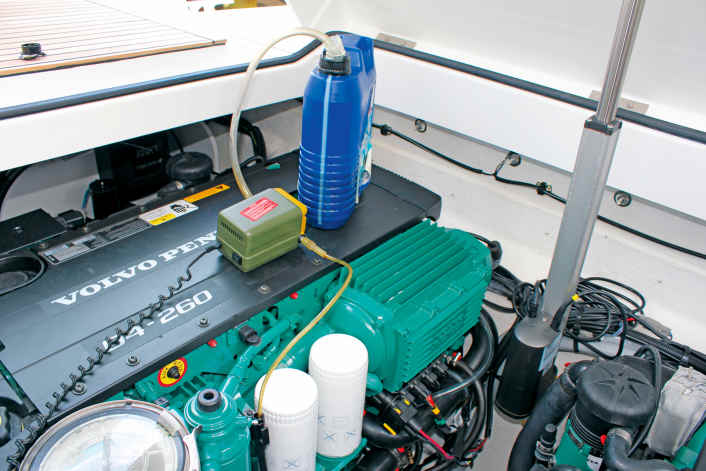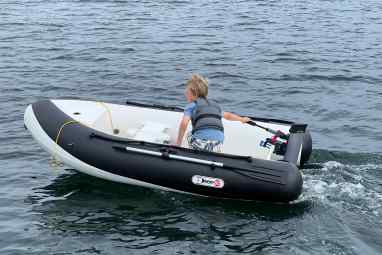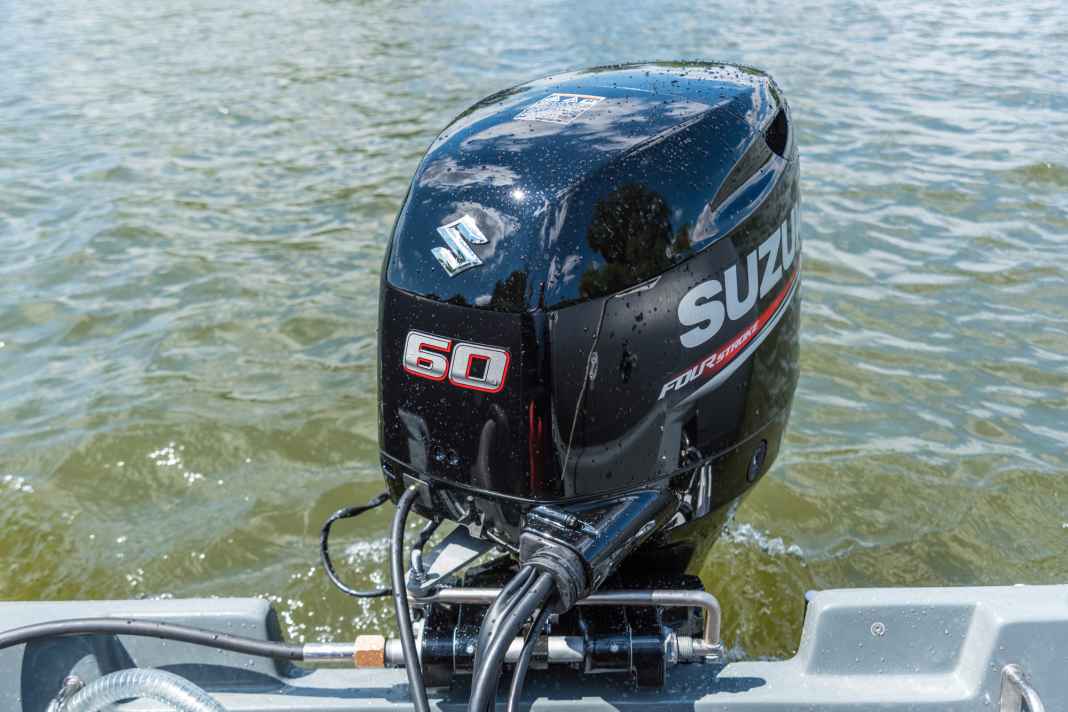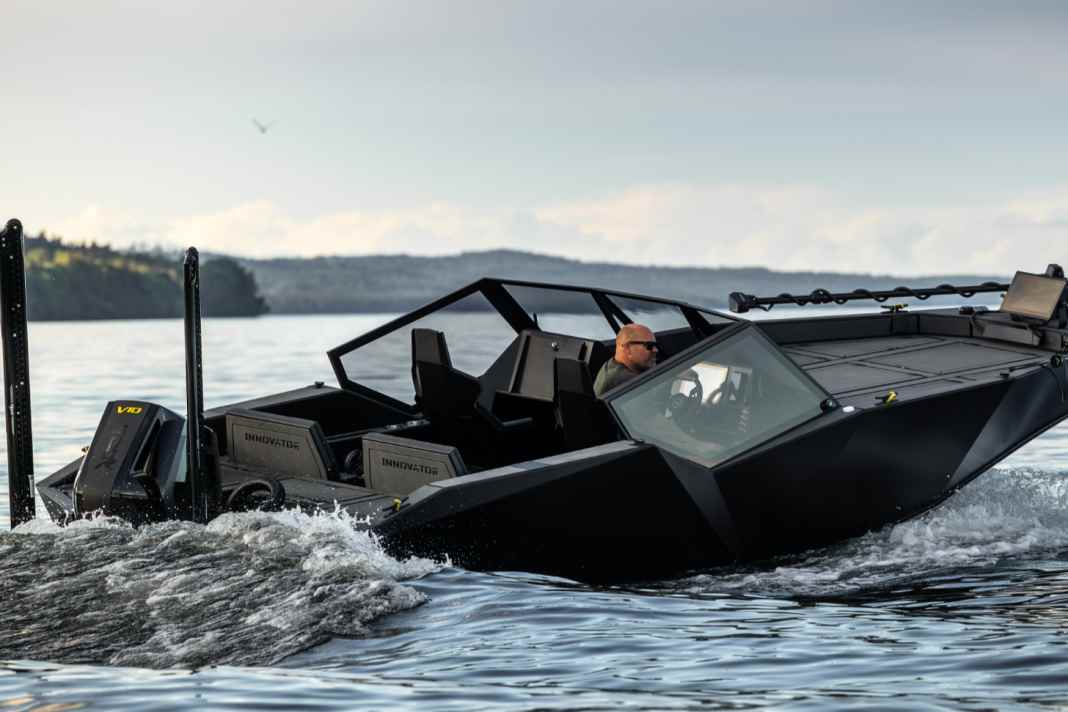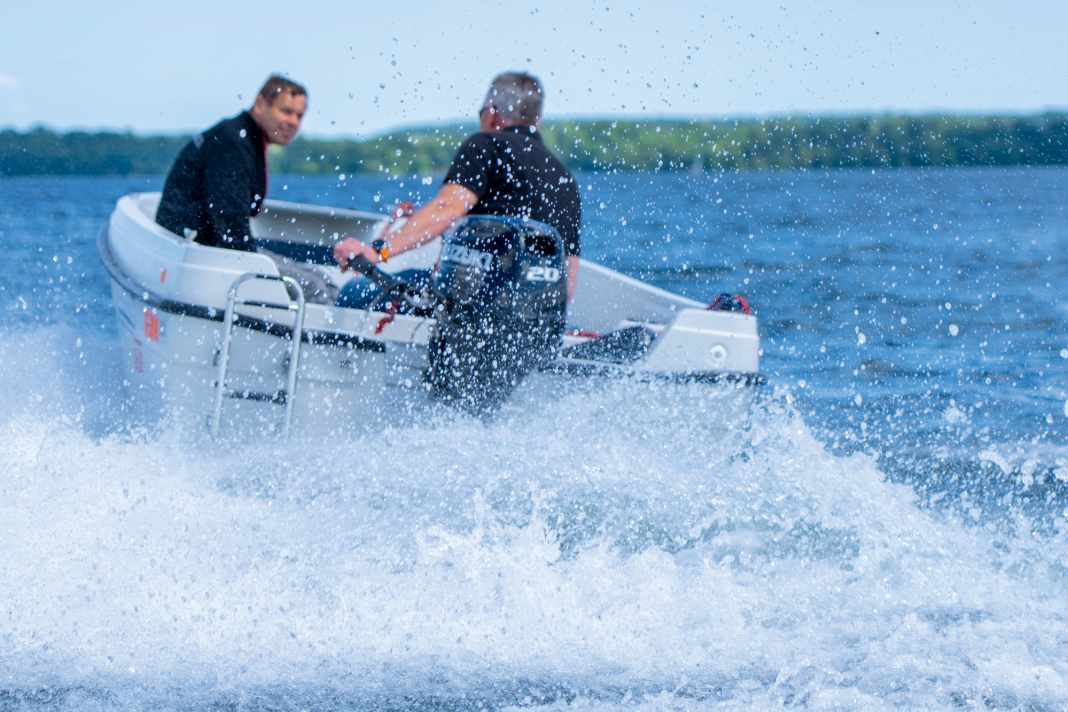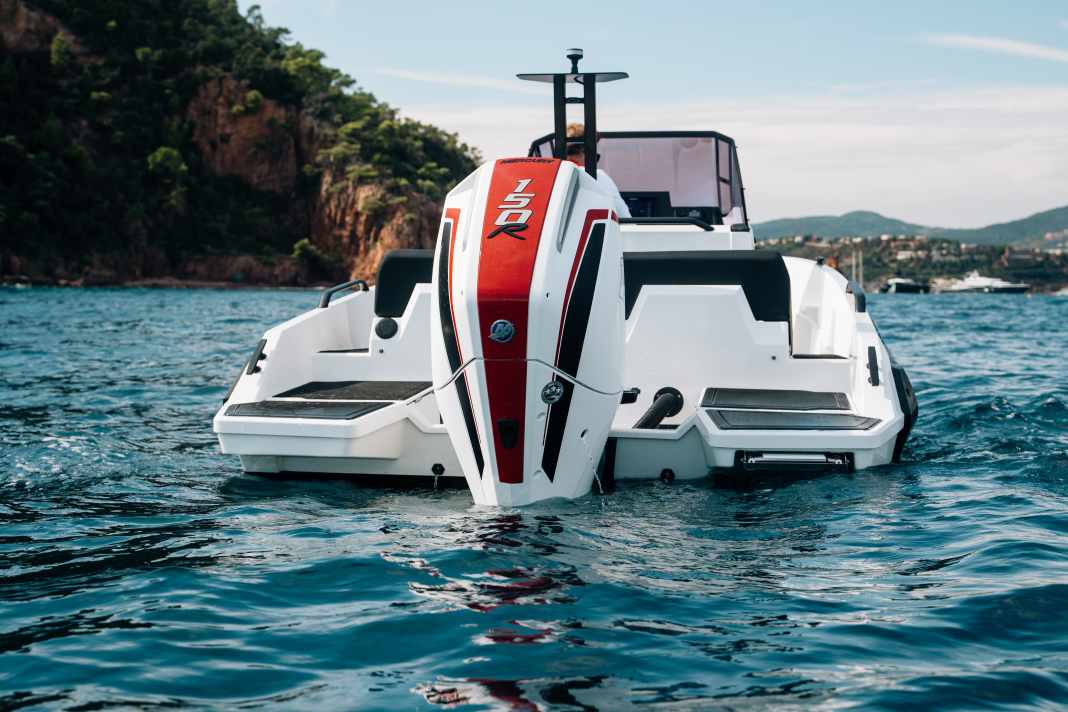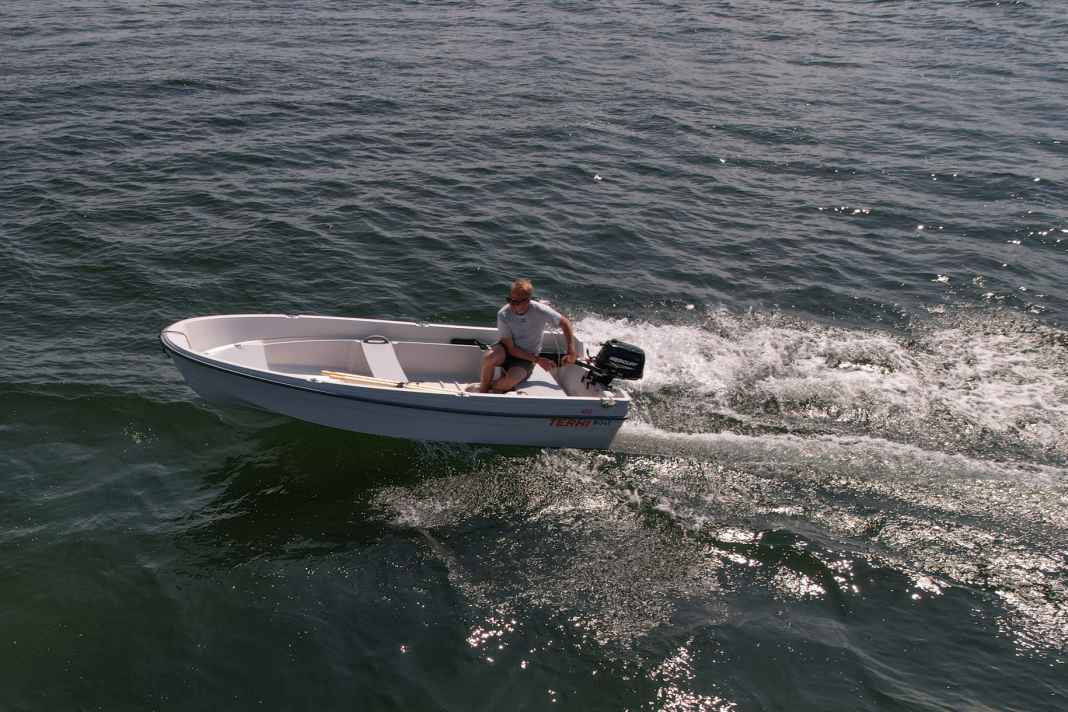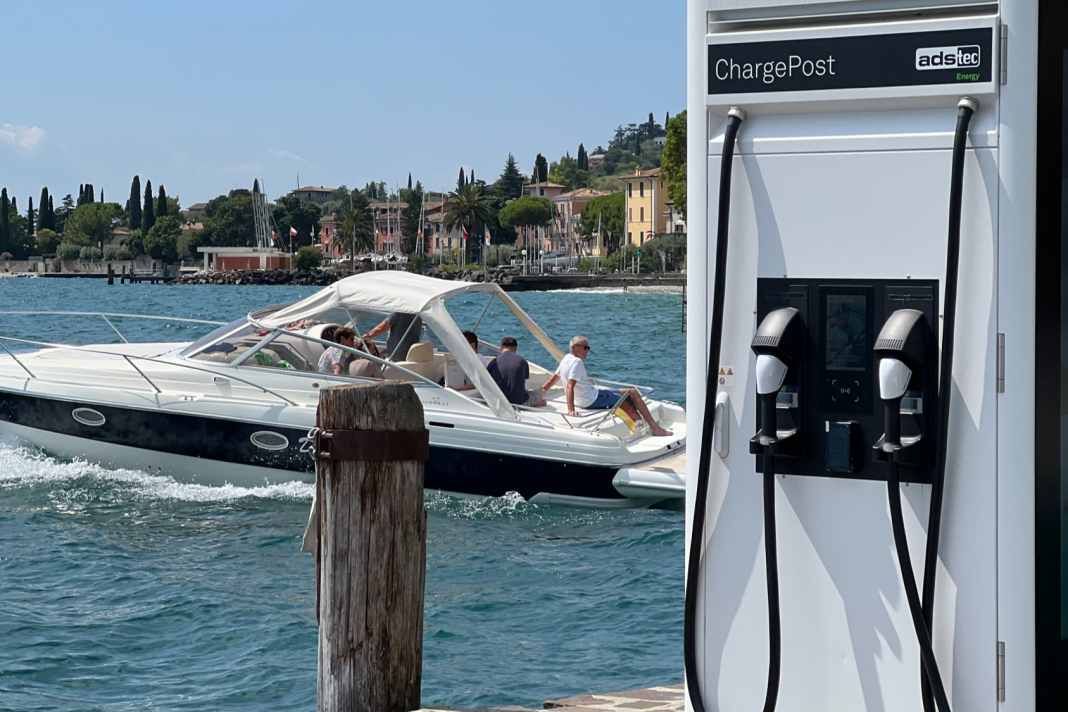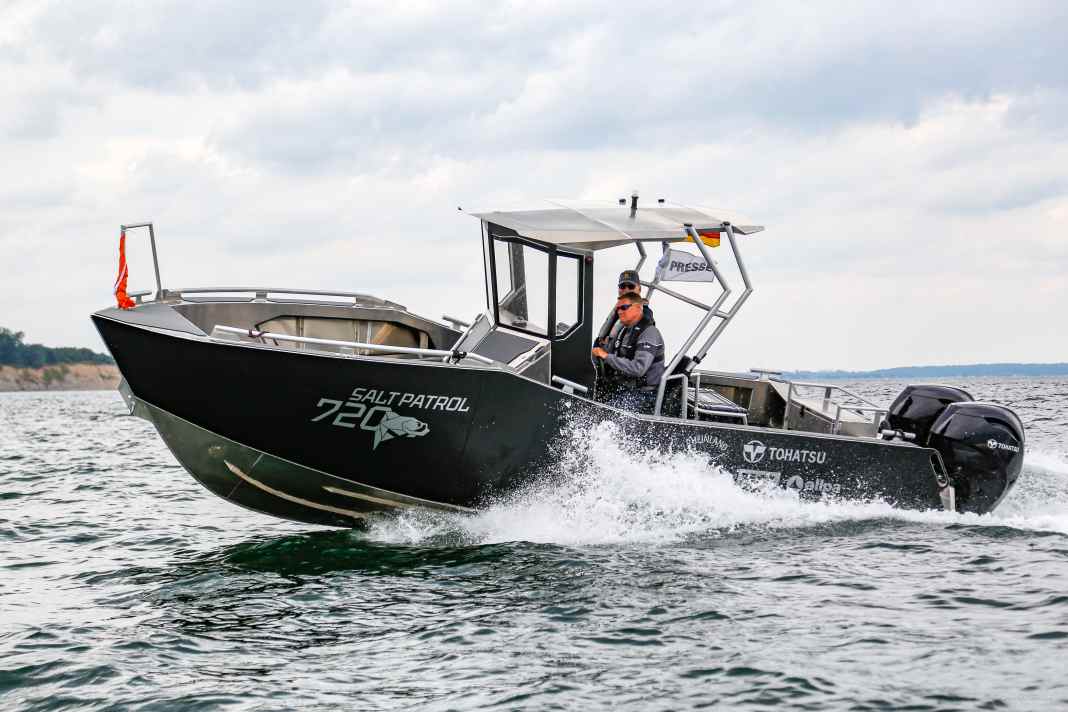Outboards: More and more horsepower, efficiency and high-tech at the rear
For smaller motorboats, the outboard motor has always been the first choice for propulsion. However, from a certain boat size upwards, there was no way around the Inboard over. This is still the case - however, the limit at which only an inboard drive can provide the desired performance has shifted quite a bit. The powerful outboards on the market today can be used to power almost any type of leisure boat. If the power of one motor is not enough, several are simply placed next to each other. But where does the trend towards upgrading the stern actually come from? What are the advantages of outboards? How do they work? And what should you consider when buying one? BOOTE. answers these and many other questions.
What makes an outboard motor?
Outboard motors are Boat engines which are located completely outside the boat. They are attached to the stern, the so-called transom. The outboard motor is located in a plastic or aluminium housing. From there, the power is transmitted to the propeller via a shaft with a gearbox. The motor, gearbox and propeller form a single structural unit. The outboard can be raised or lowered as required using a trimming device.
Sometimes outboards are also installed in special shafts in the stern area - on sailing boats, for example, where they can be positioned close to the rudder.
Otherwise, boats with outboard motors generally do not have a separate steering system. The boat is steered by swivelling the outboard motor. On smaller models, this is usually done manually with a tiller; on larger models, it is done by remote control using hydraulics, cables or electrics. The engine is also usually started manually on smaller outboards, whereas larger outboards are started electrically.
Outboards are usually petrol engines that work on the 2-stroke or 4-stroke principle. However, 2-stroke engines are hardly ever produced any more due to their higher fuel consumption and poorer emission values. Diesel outboards are also available, but the market for petrol engines in the outboard sector is much broader.
Advantages over advantages: Why so many boats are powered by outboards
What is the reason for the advance of outboards? Why are detachable engines at the stern no longer just being used on inflatable boats, dinghies and smaller motorboats, but also increasingly on larger boats? Yachts ? BOOTE summarises the indisputable advantages of outboards:
- Ease of maintenanceThe motor is freely accessible with all parts - only the cover of the housing needs to be opened. Repairs can also be carried out easily - even on the propeller or gearbox. While the entire boat has to be taken out of the water to work on the propeller of inboards, this is no problem with outboards and is possible without a slipway, crane or diver.
- Saving spaceLogically, the outboard motor does not take up any space on board - so the space can be used for other purposes.
- Outboards are usually equipped with aBetter manoeuvrabilityaremore favourable in the purchase andSmaller and lighter as an inboard.
- For boats powered by outboard motors,No separate steering gear necessary.
- See and be seen: For some boaters, it may also be an advantage that the whole world can see how much horsepower is making the boat glide. Several powerful outboards at the stern can therefore also be used as aStatus symbolfunction.
Disadvantages: What speaks against an outboard motor?
It almost reads as if there is nothing more to be said in favour of other types of drive. But that's not quite the case. Outboards also have their limits and disadvantages:
- From a certain boat size and performance level, there is still no way around inboards. For displacement boats whose main purpose is not to travel at high speed but to cover longer distances efficiently, an inboard makes more sense.
- Inboard motors are often diesel engines and therefore more economical than outboard motors, which are usually powered by petrol.
- There is a risk of theft.
- Visual, practical and acoustic disadvantages: The outboard motor protruding from the stern can be perceived as an aesthetic flaw. It can also be a nuisance as it protrudes into the stern area - it is not possible to jump into the water from the aft bathing platform. Noise pollution is also greater than with an inboard engine, which is insulated in the engine compartment.
Mixed forms: Half outside, half inside - the perfect compromise?
In addition to outboards and inboards, there are also some mixed forms, such as the Z-drive. With this type of drive, the engine is located inside the boat, but the entire drive unit (gearbox, steering system, propeller) is located outside at the stern. The sterndrive can therefore be an alternative if you want the advantages of both outboards and inboards. The IPS (or pod) drive and the forward drive system are also hybrid forms and can be considered as drive types.
How horsepower is generated at the rear: How the outboard works
Under the housing cover of outboards there is usually a combustion engine, which increasingly works on the 4-stroke principle. The fuel used in outboards is usually petrol, but there are also diesel engines as outboards. So how does a petrol engine and the 4-stroke principle work?
Air is compressed in the cylinders of the engine with the help of pistons. If fuel is then injected into this highly compressed air and ignited, an explosion occurs, which drives the piston back down again. Thermal energy is thus converted into kinetic energy, which is transferred to the crankshaft via the connecting rods. The four strokes are thus: Intake, compression, work and exhaust. The number of cylinders varies, as does their arrangement, which can be V-shaped or inline, for example.
The functionality of an outboard motor is therefore the same as that of an inboard motor or car engine. However, the power of an outboard motor is generated in a much smaller space, which requires special techniques and construction methods. In addition, some of the components of boat engines are naturally made of different materials and designed for different loads than those of land-based combustion engines.
However, the outboard motor does not only consist of the engine block, but also includes other parts such as the gearstick, tiller, twist throttle, choke, quick stop, trim, etc.
The shaft length of the outboard motor must be suitable for the respective boat type - the manufacturer will provide information on this. Normal, short or long shafts are common.
Outboard: rudder and drive in one
As already mentioned, outboard motors also act as rudders. They can be steered manually directly on the motor or by remote control. The gearstick and throttle are also operated either directly on the outboard motor or from a control station. In the case of direct operation, the engine speed is usually influenced by a twist throttle, while a lever is used to shift gears. Before starting the engine, it must be brought to the idle position.
Remote control systems can be either hydraulic, mechanical or electrical. Combinations are also possible. In addition to remote control from the control stand, there are also electronic joystick control systems. Autopilots or ASC (Adaptive Speed Control) systems can also be used as control aids.
Maintenance and repair: What needs to be done and what can boat owners do themselves?
Regardless of whether an outboard motor has 4 or 400 hp, it must be properly maintained regularly if it is to remain operational. The manufacturer specifies what work is required and at what intervals. It is not only the operating hours that make a difference, but also the water in which you are travelling. Salt water is more demanding on the outboard's materials, which is why more care and maintenance is required if the boat is used in the sea.
The major overhauls, which usually take place once a year and include, for example, oil, oil filter and fuel filter changes, can of course also be outsourced and carried out by specialised personnel. If a boat or engine is still under warranty, it is usually even essential that certain maintenance work is carried out by workshops so that the warranty cover is not invalidated.
Despite the best maintenance, sooner or later one or two repairs will need to be carried out on the outboard motor. Often it is only wearing parts that need to be replaced, such as spark plugs or seals. If you are travelling for longer periods and in less sheltered areas, you should be able to carry out such simple repairs yourself and always have the most important spare parts and tools on board. In the case of more complicated defects, there is usually no way around visiting a workshop, which will then take care of troubleshooting, ordering parts and repairs.
Modern outboards are high-tech machines with lots of electronics - not necessarily the kind of thing that a hobby mechanic with basic mechanical knowledge should be tinkering with. However, boat owners can carry out simple repairs, maintenance and care work themselves. To make this even easier, BOOTE regularly provides practical tips and tricks.
What you should consider when buying an outboard motor
Whether you are about to buy a boat and engine or are just looking for a new engine for a boat you already own - there are a few things you should definitely bear in mind! BOOTE explains what is important when buying an outboard motor.
The outboard motor market seems almost limitless: from the market leader Mercury to other traditional boat engine manufacturers such as Yamaha, Suzuki, Tohatsu and Honda through to low-cost providers on Amazon. The decisive factor is that the outboard motor suits the intended use and type of boat - and of course the budget.
So how do you find out which outboard motor is the right one? Answering the following questions will bring you a little closer to your goal:
- How big is the boat and how many people are to be transported on it?
- What type of boat is it (glider, semi-glider, displacement, inflatable, sailing yacht, etc.)?
- Which waters should be navigated?
- How large is the distance between the upper edge of the engine level and Bottom edge of the hull?
- Will the boat be used more for short or long distances?
- Is the priority rather maximum speed or the lowest possible consumption at optimum speed?
- What is the purpose of the boat (towing, fishing, cruising on the high seas, dinghy, etc.)?
- Do you favour a particular manufacturer?
- What budget do you have available for acquisition and ongoing operating costs?
- Do you want to buy a used or a new engine?
You should answer these questions honestly - if you save money in the wrong place or buy an outboard motor that is not suitable for the intended use, you will pay for it during operation. Too little power can mean difficulties when manoeuvring. The joy of the favourable purchase price when buying a no-name outboard can quickly be dampened if it turns out that the components are inferior or the specified performance does not correspond to reality. Caution is also advised when buying a second-hand outboard motor: Only those who scrutinise the second-hand motor closely will be immune to nasty surprises. And even if the engine from the second-hand market is in good condition, repairs and possibly higher fuel consumption are more likely to be expected than with a new model.
The running costs associated with an outboard motor should also be taken into consideration. If you are already stretching your financial resources to the maximum at the time of purchase and then can no longer afford proper maintenance, winterisation or insurance, or if you get a stomach ache at the thought of fuel prices, you will not be happy even with your dream engine at the stern.
Brands, manufacturers and models - what the market has to offer
If you already have a rough idea of what kind of outboard motor you want, you may still be spoilt for choice as to which manufacturer you should buy your dream motor from.
Renowned manufacturers such as Mercury, Yamaha, Suzuki, Tohatsu and Honda supply high-quality outboards in a wide range of designs and performance levels. But the Parsun brand is also attracting attention with its unbeatable price-performance ratio. Finally, there are numerous companies that specialise in electric motors, such as Torqueedo and RiPower.
All of these manufacturers are constantly developing new technologies and models - for even more driving pleasure, performance and, above all, efficiency. The latest high-performance V10 400R outboard from Mercury, for example, features a so-called Racing AMS (Advanced MidSection), a heavy-duty support system with stiffened bearings for the engine. But outboard engines in the mid and lower performance range are also constantly being developed further and made smarter and more efficient. BOOTE reports on all developments and regularly presents the latest models and technologies in the outboard engine sector so that you don't miss a thing. Tests, comparisons and field reports are designed to give you a better insight into the market than mere figures.
Electric motors: clean, quiet and climate-neutral
An increasingly popular alternative to combustion engines are also outboard motors. Electric motors. While mechanical energy is generated from thermal energy in combustion engines, electricity, i.e. electrical energy, is required to drive the electric motor. If this flows through the coil around the rotor inside the electric motor, a magnetic field is created. In interaction with the magnetic stator surrounding the rotor, a rotary movement of the rotor is created. Electric outboards usually use a battery as their energy source, which can be recharged via a charging station on land or with the help of wind or solar power.
The advantages of electric motors:
- They are climate-neutral, low-emission and environmentally friendly. A clear conscience is therefore allowed on board - and ensures even more driving pleasure.
- Electric motors are practically maintenance-free - this not only saves time, but also money!
- However, this is not the only reason why electric outboards are cheaper to operate: electricity is much cheaper to obtain than fossil fuels such as petrol or diesel - not to mention the fact that these are becoming increasingly scarce.
- Another big plus point of electric outboards is their noise level. Even if the loud chattering of an outboard motor with a combustion engine is simply part of motorised water sports for some boaters - once you get used to the fact that you can talk on board without having to shout, you won't want to do without it. So if you're travelling with an electric drive, it's much quieter on board!
- The efficiency of electric motors is also much better than that of combustion engines, which in practice means better starting acceleration.
- While petrol engines sometimes have to be started under their own power using a cable pull, an electric motor only requires the push of a button.
- Last but not least, boat owners who opt for an electric drive are guaranteed not to face any driving bans. No matter what emission standards apply in a sailing area - with an electric motor, you will definitely meet the requirements!
If you're faced with the decision of whether to go electric or stick with a combustion engine, you need to be aware of the disadvantages of electric motors. They are manageable - but not negligible:
- Opponents of e-mobility repeatedly point to the shorter range of electric motors compared to combustion engines. This argument can certainly be decisive for certain applications - for others, however, it is irrelevant, for example if mainly shorter distances are to be travelled by boat anyway.
- The greater the storage capacity of a battery, the more expensive it becomes. The high price of the batteries for electric motors accounts for the majority of the total purchase costs of an electric outboard motor. Electric motors are therefore more expensive to purchase than combustion engines, especially in higher power ranges.
- The battery manufacturing process is also criticised. Both their production and their transport from Asia to Europe pollute the environment and emit CO2. However, the overall balance of electric motors still looks much better than that of combustion engines.
- The weight of lithium batteries, which are installed on the boats of "frequent travellers", can also be a disadvantage. A lighter and less expensive alternative for boats that are not used quite so often are AGM or gel batteries.
- The charging time can also be an obstacle for some buyers.
The rapid developments in e-mobility suggest that it will become increasingly attractive to opt for electric outboards in the future. BOOTE not only shares theoretical figures on electric motors, but also experience reports from motorboat drivers who have switched to electric themselves. This allows readers to get the best picture of the advantages and disadvantages of electric motors.
Immerse yourself in the world of outboards with BOOTE
One thing is certain:Whether petrol, diesel or electric motor - outboards are the top dogs in motorboat sport with their numerous advantages and highly developed technology.
If you want to delve a little deeper into the exciting world of outboards, then BOOTE is the right place for you. What happens under the cover of outboard motors, how to maintain them, which manufacturers are recommended and what you need to consider when buying - BOOTE explains all this and much more in numerous articles.
